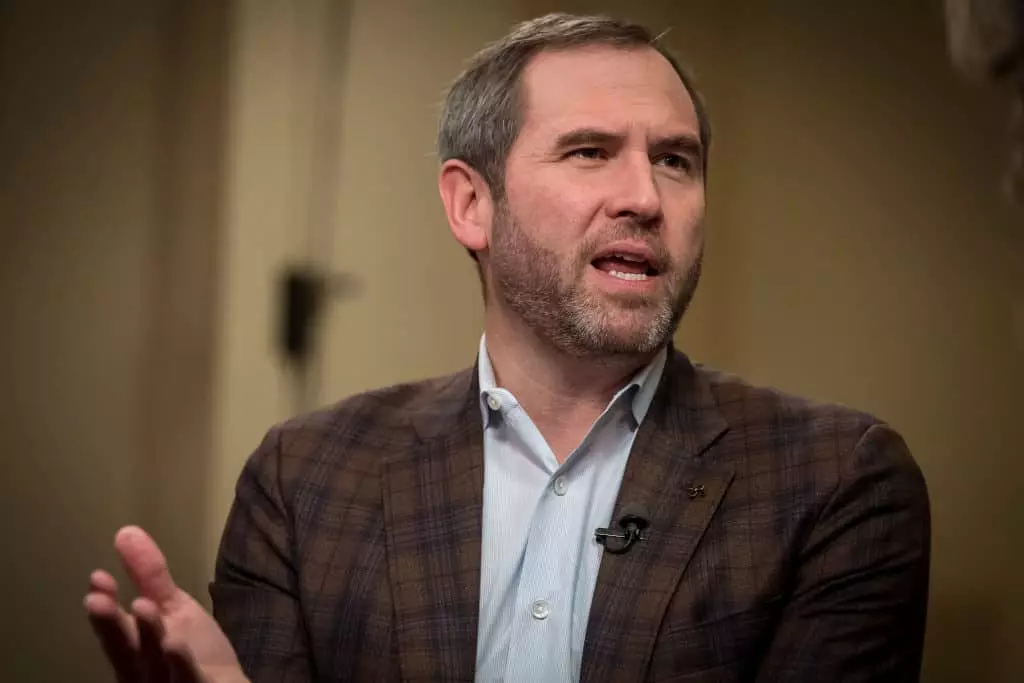In recent days, the crypto community has found itself embroiled in passionate debates concerning the potential inclusion of diverse cryptocurrencies in a proposed U.S. digital asset reserve. While Bitcoin remains the focal point of this discussion, it is Ripple’s XRP that has drawn significant criticism from various factions. This conflict encapsulates a broader theme in the cryptocurrency landscape: the clash between maximalism, which promotes a singular focus on Bitcoin, and a more inclusive approach that acknowledges the potential of other digital assets.
XRP has emerged as a flashpoint in this debate, particularly following comments made by Brad Garlinghouse, Ripple’s CEO, who addressed the criticisms surrounding XRP’s legitimacy and its potential role in a national digital asset reserve. Garlinghouse advocates for a united front among all cryptocurrencies, emphasizing the importance of collaboration rather than division. His call for a “multichain world” echoes a sentiment shared by many who recognize that the future of cryptocurrencies may not be a zero-sum game defined by individual winners and losers.
On social media, Garlinghouse made it clear that authentic growth in the crypto space relies on cooperation. He passionately asserted that achieving common goals is possible only if stakeholders work together rather than attack one another over the merits of their respective tokens. Garlinghouse’s insistence on inclusivity highlights a fundamental challenge in the crypto community — establishing a common ground amidst the competing interests of various coins and projects. This perspective opposes the prevailing maximalist ideology, which often belittles alternatives to Bitcoin, labeling them as inferior or detrimental to the overall progress of digital currencies.
Garlinghouse believes that, should the U.S. government decide to create a digital asset reserve, it should reflect the entirety of the cryptocurrency industry and not solely favor Bitcoin. His viewpoint suggests a more democratic approach to cryptocurrency’s future, where every asset is considered based on its merits rather than its popularity or market dominance.
However, Garlinghouse’s message has been met with staunch opposition from Bitcoin maximalists, who argue that XRP’s centralized nature undermines the core principles of cryptocurrencies. Critics like Michelle Weekly, a prominent BTC advocate, have accused Garlinghouse of hypocrisy. They contend that Ripple has historically taken positions that are at odds with the values espoused by Bitcoin proponents, including lobbying against Bitcoin’s place in U.S. reserves.
Moreover, voices like Ryan Selkis, founder of Messari, have vehemently opposed the idea of including tokens like XRP and Solana in any national reserve. His statements suggest a fear that incorporating non-Bitcoin assets into the reserve could dilute Bitcoin’s message of decentralization and governance by the community rather than corporations. This illustrates a significant rift in perceptions regarding which cryptocurrencies should be deemed valuable and worthy of inclusion in authoritative frameworks.
The U.S. government’s exploration of a digital asset reserve raises critical questions about the future of cryptocurrency regulation and integration into mainstream finance. As President Donald Trump’s executive order suggests, there is a genuine interest in understanding which digital assets can truly benefit the economy. But this also presents a danger of further polarizing the crypto community, encouraging infighting that could hinder progress. As proponents of each camp dig in their heels, the industry risks fracturing beyond repair.
The ongoing contention underscores not only the strategic importance of cryptocurrencies but also their philosophical foundations. As the debate continues, the future landscape of digital currencies may depend on the community’s ability to reconcile differing philosophies. Will the industry continue down the path of maximalism, or will it find ways to embrace more collective thinking?
Navigating this divide will be essential for fostering an environment where cryptocurrencies can thrive and contribute meaningfully to the global economy, rather than becoming ensnared in divisive ideological battles. With voices on either side of the argument becoming increasingly passionate, it remains uncertain how this critical dialogue will unfold, but it undoubtedly represents a defining moment in the cryptocurrency narrative.















Leave a Reply